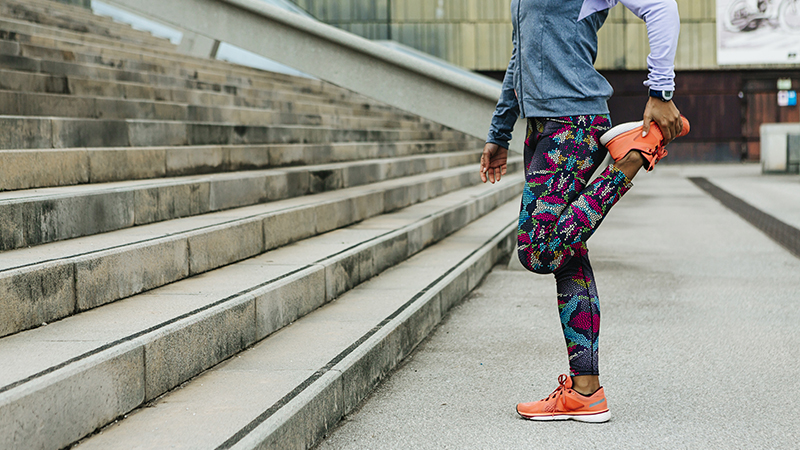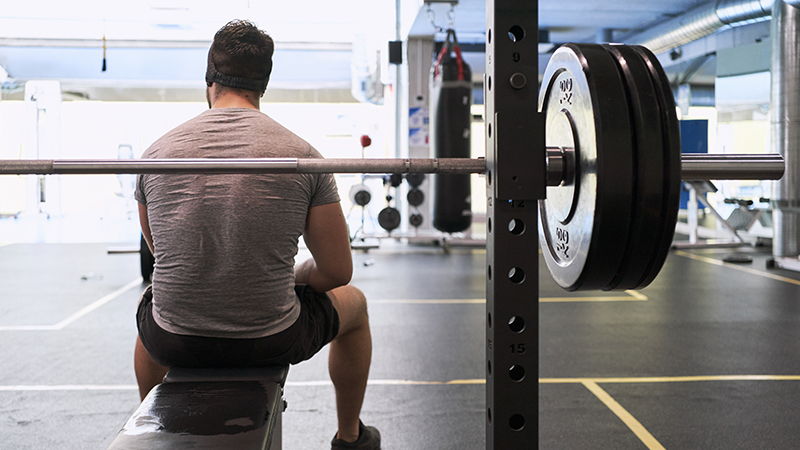5 Ways to Work Out in Winter
Published November 2018
Keep Your Fitness Up When the Temperature Drops
Winter can present a change — and a challenge — for even the most avid exercisers. When the temperature drops and weather worsens, your outdoor options narrow. But with the right gear and advance planning, you can keep your fitness on track all year long, whether you’re braving the elements or seeking shelter inside.
1. Sign Up for a Class
Winter is the perfect time of year to try out those classes that piqued your interest in the past months. When you need a little extra encouragement to get to the gym or out of the house, the set time and group of peers that come with classes can help. And with options ranging from boot camp and dance to trampolines and kickboxing, there’s no shortage of new things to try.
2. Bring It In
You’re a regular at rec league sports, but worried that winter is the end of your season. Have no fear: indoor courts can keep your competitive basketball, soccer or tennis streak alive. But why not try something new, too? Rock climbing and swimming are both excellent options with indoor environments well suited for winter. Interested instead in a workout that sneaks up on you? Dodgeball is an increasingly popular game to play with friends.
3. Adjust and Excel
Just because it’s cold outside doesn’t mean you have to scrap your whole running routine, particularly when a winter workout can increase the value of every active minute outdoors. The cold increases how hard your body has to work, which increases endorphins released and calories burned, too. Consult a sports medicine physician or personal trainer to ensure your routine stays safe as the weather changes. And be realistic — you won’t necessarily hit your best times or usual pace in more intense conditions. In the meantime, start with these guidelines:
- Flex your time: If you’re an early morning or late night outdoor exerciser, you may need to adjust to the afternoon to better suit temperature and safety.
- Pick a short route, and repeat: A short route near your home allows you quick access to the indoors if you slip, if you get too cold or wet, or if the weather changes drastically.
- Pick plowed streets: Choose paths that are plowed and go for well-lit streets as well — that way you can see any black ice that may be on the ground.
- Light your own way: Reflectors, flashing lights and headlamps are easy and accessible options that increase your visibility when running on roads.
- Get a grip: Trail or winter shoes are a worthwhile investment for the dedicated winter runner, but add-on shoe or tread traction devices, like Yax Trax, can improve your traction when you’re running in the elements as well.
- Dress appropriately: This means layers. Wear a snug but breathable (no cotton!) shirt, then a fleece for insulation and a wind-/water-resistant jacket if it’s below freezing. A good rule is to dress for weather 20 degrees warmer than the temperature outside. You should dress to be cool when you first get outside because your workout will warm you up to a healthy temperature. You may also want to consider buying winter workout gear that is wind-resistant, moisture-wicking and waterproof. Not only will it keep you comfortable, the purchase may motivate you to get out there and use it too.
- Warm up right: Due to change in temperature, your warm up and cool down routines may need to be adjusted to avoid shock to your body. Consider walking or jogging in place indoors for five minutes before heading out, and spending five to 10 extra minutes moving around when you’re back from your run.
- Save your shoes: Keeping your kicks in good shape is a key step in building a commitment to outdoor exercise. When you’re running in the snow or slush, you’ll want to remove sock liners and wet laces when you first get home. Then, stuff your shoes with newspaper and place them near a heat source. But be careful not to put them too close — too much heat will break down rubber and foam in the shoe and can be a fire hazard.
- Stay hydrated: Even if you aren’t seeing sweat like in the summer, pay attention to your hydration. You can still sweat a lot in cold weather and should be drinking water or sports drinks.
4. Try Something Seasonal
Getting outdoors in the winter is always a good idea and can help fight seasonal affective disorder, but sometimes going for a run is asking too much. Fun winter activities like ice skating, having a snowball fight, sledding and skiing — both cross-country and downhill — burn more calories than you might expect. Snowshoeing is another winter workout that is increasingly popular, effective and accessible for the whole family.
5. Work From Home
Some winter days, against all our best efforts, making it outside just isn’t in the cards. Luckily, there are a number of workout options that can be done from the comfort of your living room. Even if you don’t have resistance bands or weights at home, bodyweight routines can provide an intense workout using just your body. Squats, push-ups, crunches and high knees are your winter workout friends.
Whether your winter workout has you venturing into the tundra or simply standing up from the couch, setting realistic goals can help you along the way. Not only do they help adjust your expectations for your body in new conditions, they can also form the basis for the new year’s routine.





